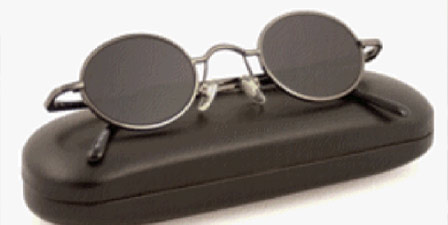By Mathew Guy Musladin, ABOM

Reduced thickness, it sounds like a fitness program or a diet plan!
When it comes to optics though, reduced thickness refers to the theoretical way a ray of light passes through an optical system. It is a branch in our vocational field called geometric optics. And, if you’re a nerd (or even “nerdish”) this is a matter of course. If not though, understanding the basics of reduced thickness can help to visualize why lens thickness matters, as it explains why just algebraically adding the clocked front and back powers can be so different from what you will read on the lensometer. This is why we read the back side of the lens, because that is where the client looks through the lens! Understanding will help you to design more effective eyewear. It will make you better intuitively. It will make you a better optician.
What is reduced thickness? In geometric optics, reduced thickness refers to the apparent thickness of an optical element, such as a lens or prism, as seen by light rays passing through it. It takes into account the curvature of the surfaces of the element. Reduced thickness is often used in calculations involving refraction where the speed of light changes as it passes through different media. The reduced thickness helps determine the path of light rays and the deviation they experience when passing through optical systems. It's particularly important when analyzing thin lenses in optical systems. Of course, one person’s thin lens is another person’s thick lens! It all depends on the application.
It is the latter part of this definition that we will be concerning ourselves with.
In essence, when ophthalmic lens parameters are being calculated, the lens is being broken down into its component “parts”, so to speak. The front and back surfaces are converted to their “true powers”. This allows them to be treated as separate theoretical “thin” lenses. That leaves the center thickness as the remaining part. This is where reduced thickness comes in. As light leaves a theoretically thin lens, it changes direction. This is referred to as vergence. We know that plus surfaces converge light and minus lenses diverge light. The reduced thickness of the lens acts as the “in air” equivalent as light leaves one lens power and becomes incident on another.
So, let’s cut straight to the meat and bones calculations:
Of course, there is an index of refraction. How about poly at 1.586.
Front curve clocks at: +8.50 Therefore the true power is: (1.586 - 1.00)/(1.53 - 1.00) x 8.50 = +9.40D
Back curve clocks at: -4.25 Therefore the true power is: (1.586 - 1.00)/(1.53 - 1.00) x (-4.25) = -4.70D
This is where the reduced thickness calculation comes in! It is simply the thickness, in the desired measurement (in this case millimeters) divided by the index of refraction. For this example:
Center thickness measures: 5.2mm Therefore the reduced distance is: 5.2mm/1.586= 3.28mm
The back vertex power of the lens (where the patient will be looking through) will be the power measured on the lensometer. We can do the calculations to see if we can confirm that power!
First, the front true vertex power must be converted into a focal length. Remember your ABO formula for focal length: 1/D=f. Plug in the numbers to get: 1/9.40=.106383. This is in meters. To keep with consistency the thickness, which is in millimeters, must be converted into meters. Since there are 1000 millimeters to a meter, the 3.28mm must be divided by 1000 to get: 0.00328. Subtract that from the previous focal length: .106383 – 0.00328 = 0.103103.
Now the formula on the other side of that ABO study comes into play: 1/f= D. Plugging in the numbers gives: 1/0.103103= 9.70
The final step of calculating the back vertex power is simply adding the true power of the back surface on the lens: +9.70 + (-4.70) = +5.00D
This is significantly different from adding the clocked powers together, which would give:
+8.50 = (-4.25) = +4.25D, a +0.75D difference
Or even the adding the true powers together without considering the change in vergence from front surface to rear surface: +9.40 = (-4.70) = +4.70D. This is +0.30D, which is a clinical difference.
What to conclude then? The thicker the lens, the greater the power change front surface to rear surface. Intuitively this should lead to great consideration regarding frame choice and the refractive index of lens materials. Flatter curves can be used. This will result in better eye-wire fit, better cosmetics, and more importantly, better optics through less magnification and distortions!













